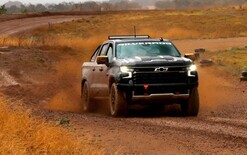AI to help in bug battle

A group of Kiwi scientists are using artificial intelligence (AI) to develop technology that will help identify insects including the brown marmorated stink bug (BMSB), which disrupted New Zealand’s automotive industry earlier this year.
Scientists from the Universities of Waikato and Canterbury, and from Manaaki Whenua Landcare Research, have designed technology that allows people who find a rogue or unrecognisable insect to take a photo and upload it for their computer to identify it in a matter of seconds.
The BMSB biosecurity issue dominated New Zealand’s motor-vehicle industry for the first quarter of 2018 when four car carriers were ordered out of Kiwi waters after bug infestations were found onboard, disrupting the vehicle supply chain.
“We started this work before BMSB became an issue, but our research is especially relevant with the recent find of the insects in containers of used cars coming into the country,” says Dr Michael Cree, who is currently working on the project.
The correct identification of potential pests, pathogens and weeds is critical to national biosecurity, says Cree. An invasion of BMSBs would also devastate New Zealand’s horticultural industry, destroying more than $4 billion of export value and costing thousands of jobs, according to a report from the New Zealand Institute of Economic Research.
“We need to monitor the borders to make sure nasty organisms don’t enter the country,” says Cree. “New incursions need to be spotted early when we can do something about them.”
While the stink bug earned its name from its tendency to release an odour when disturbed or crushed, many other insects share these same characteristics, including some species of ants, beetles and other bugs, says Cree.
“It’s a perfect example of how our prototype based on deep neural networks might be used. The Ministry of Primary Industries has expressed interest in our work.”





